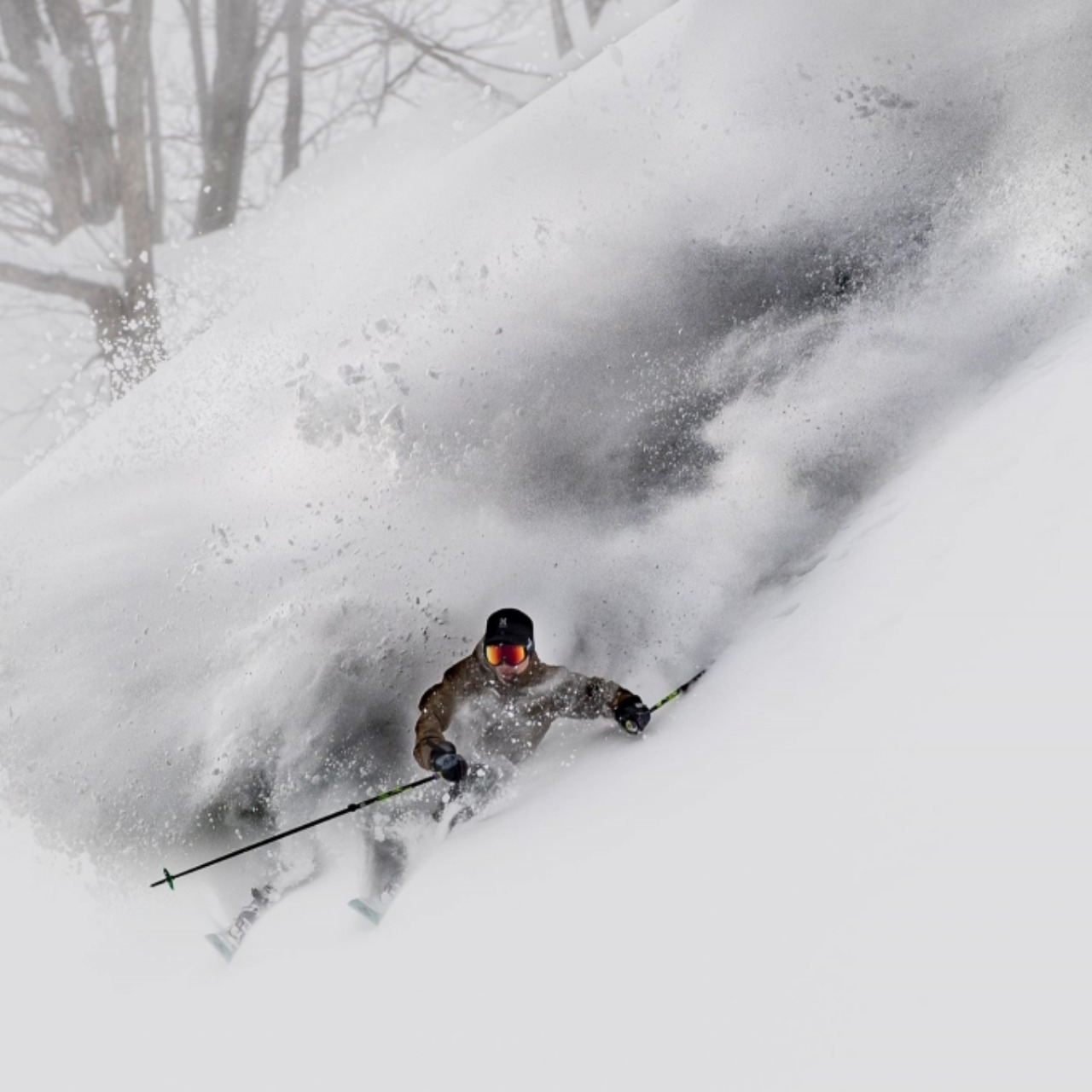What exactly is a ‘great day’ in Japan?
Picture your skis & boards disappearing under 40cm+ plus of snow as you glide weightless down the mountain. There is near zero visibility, you have maxed out your layering, and your full face balaclava is fringed with snotcicles. Your thighs are burning and your fingers are nearly frost bitten, but the promise of more fresh tracks keeps you riding to the lift line for more. That’s a great day in Japan. For those of us who prefer groomers, it’s time to retreat into the warmth of the dining hall for a hot coco and leave the slopes to the mad men connoisseurs of powder.
Kiroro
Quite possibly the Snowiest Resort in the World, Kiroro in Hokkaido benefits from receiving constant stream of clouds sweeping off the sea of Japan and freezing Siberian winds. The net effect of which is the resort gets absolutely pounded with snow. Consistently receiving more than Niseko, which already gets a lot.
Average Snowfall: 21m
Powder Policy
Kiroro has designated powder runs where the course is left ungroomed for you to sample the local produce. There are in-bounds tree run areas for advanced skiers, which are self responsibility areas - meaning that you will pay for any rescue costs if needed.
Sapporo Kokusai
Maybe second only to Kiroro, Kokusai also benefits from the same factors as its neighbor. Its a smaller resort which is less likely to be frequented by travelers and hence less competition for powder.
Average Snowfall: 19m
Powder Policy
There are no official powder and tree run areas. Go off piste at your own risk.
Myoko Kogen
Myoko Kogen in Niigata is one of the regions with the heaviest snowfall in Japan. It’s proximity to the coast, sees a vast amount of moisture dumped by storms on the mountain range. Although powder purists may say that the high moisture content of the snow makes it slightly wetter than the fluffiest powder, who’s complaining when you are waking up to 40cm+ freshies everyday. Powder seekers should check out Seki Onsen with it’s un-groomed courses and a liberal off-piste rules.
Average Snowfall: 14m
Powder Policy
There are ungroomed runs where you can enjoy the Myoko pow.
Going off-piste is forbidden at the big resorts, but at Seki Onsen it’s almost encouraged.
Appi Kogen
Situated in Iwate - one of Honshu’s Northernmost regions, the region has temperatures averaging much lower than in the Southern Japanese Alps. This is why the Appi Kogen ski resort has one of the highest snowfalls in Japan with an average of 12m. Appi was also blessed with the most snowfall in 2020 when other resorts were struggling.
Average Snowfall: 12m
Powder Policy
Appi has a couple of un-groomed powder runs and 3 tree run zones. Less crowded than more well known resorts there is a good chance of scoring fresh tracks.
Niseko
Popular with international powder seekers, Mt Niseko near the Western coast of Hokkaido is renowned for its incredible snowfall. It’s no wonder Gentemstick founder Taro Tamai based his operation here where the deep snow enabled the snow surfing movement. Due to its proximity to the Sea of Japan and Hokkaido’s freezing temperatures, Niseko receives an average of 14m of snow per season. Almost enough to go round for the throngs of visiting powder seekers.
Average Snowfall: 14m
Powder Policy
Niseko has a backcountry gate system to allow skiers & snowboarders to ride safely in the right conditions.
Riding out of bounds elsewhere is prohibited.
Geto Kogen
Known as the ‘King of Snow’, Geto’s unique location in a narrow mountain divide sees an average of 15m of snow delivered yearly. Geto capitalises on this natural resource, appealing to powder seekers with several tree run zones and un-groomed courses. Helmets are mandatory on these runs, and riders need to be competent and have good avalanche knowledge.
Average Snowfall: 15m
Powder Policy
Riding is allowed in the tree run zones.

